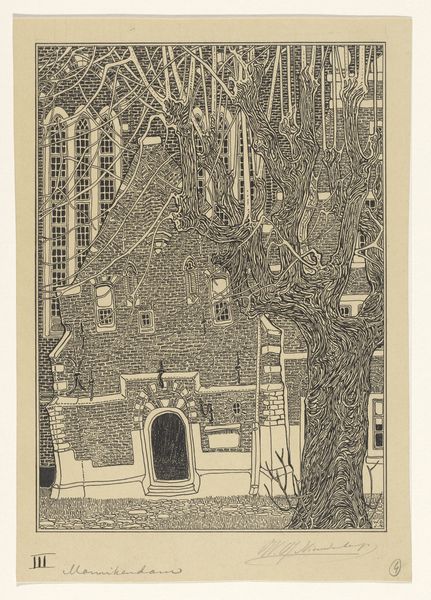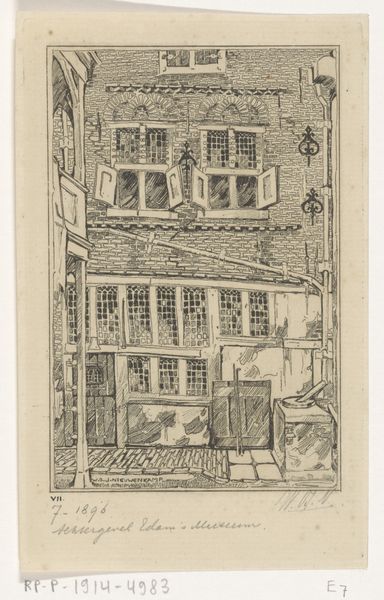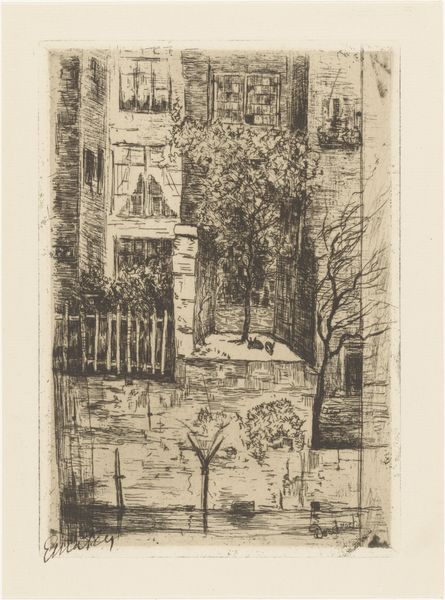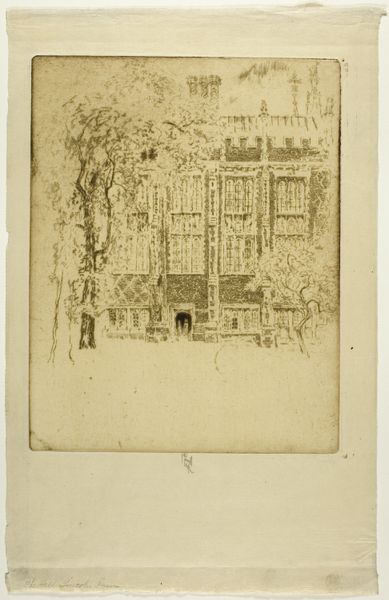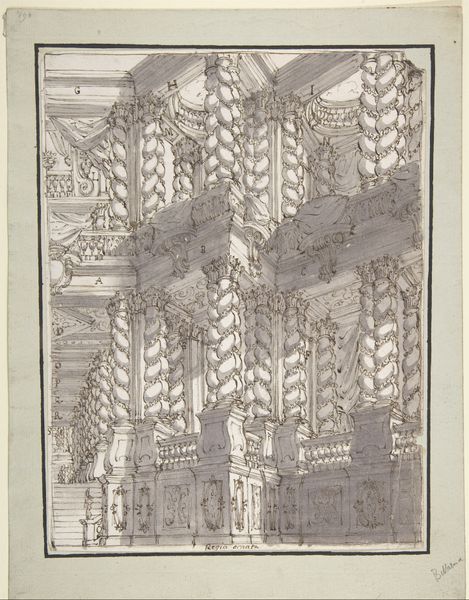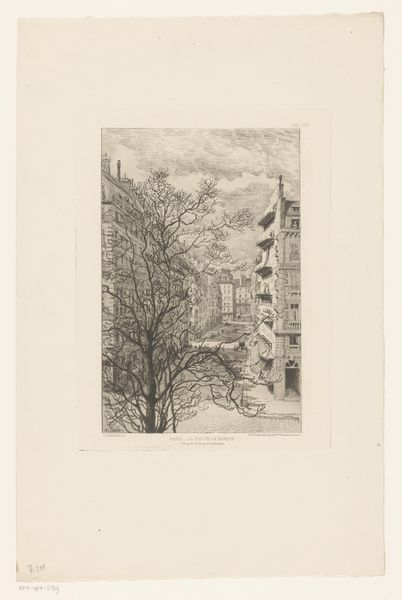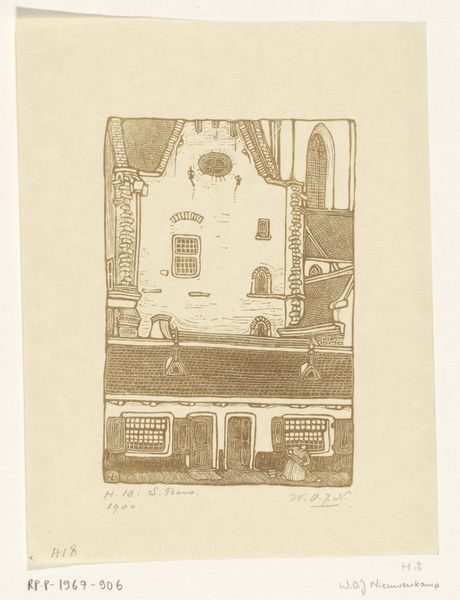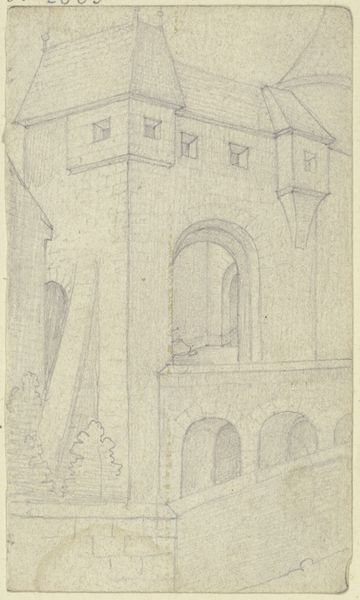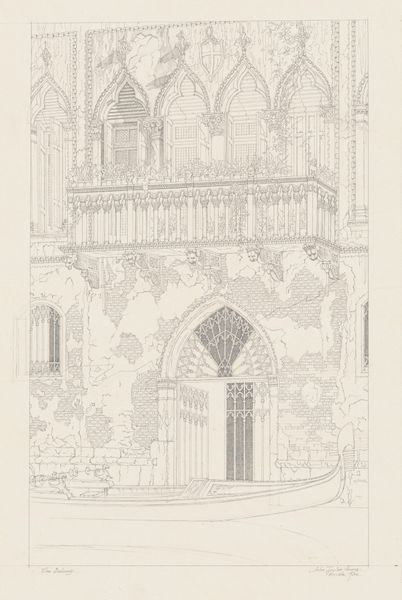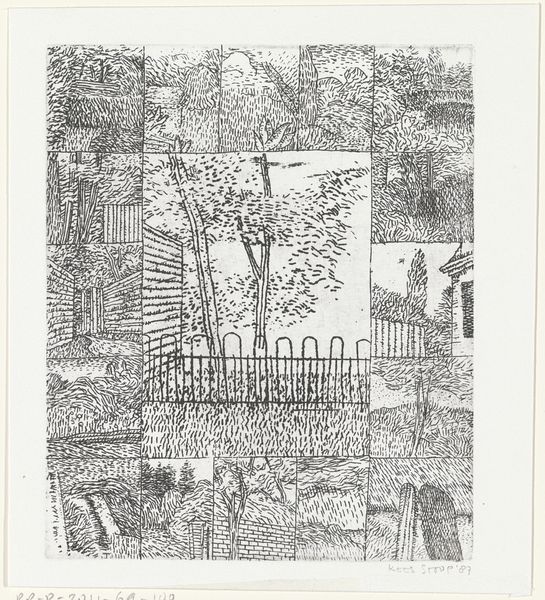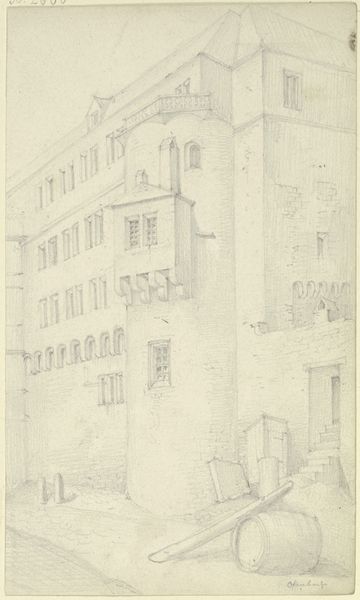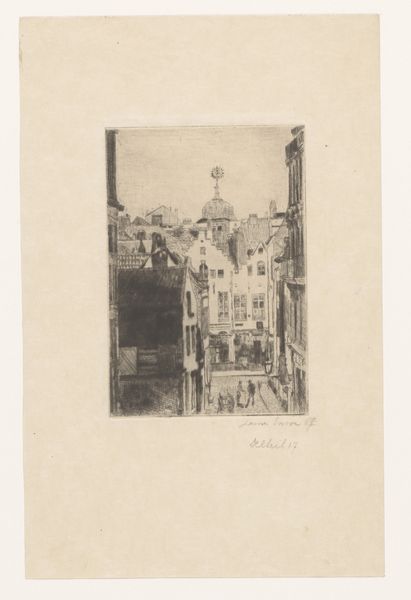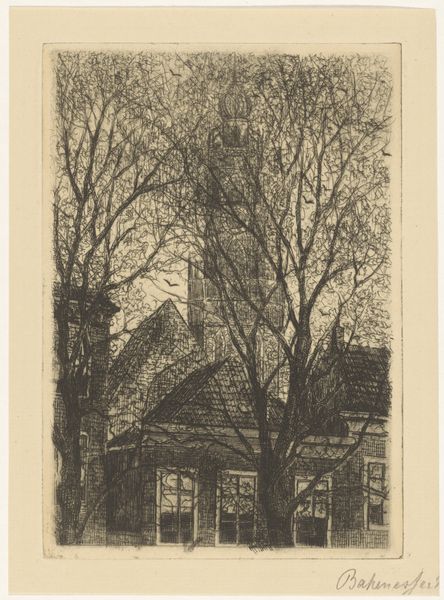
Ingang van de Grote of Sint-Nicolaaskerk te Monnickendam before 1897
0:00
0:00
drawing, paper, ink, pen
#
drawing
#
dutch-golden-age
#
mechanical pen drawing
#
pen illustration
#
pen sketch
#
old engraving style
#
landscape
#
paper
#
personal sketchbook
#
ink
#
pen-ink sketch
#
pen work
#
sketchbook drawing
#
pen
#
cityscape
#
storyboard and sketchbook work
#
sketchbook art
Dimensions: height 227 mm, width 158 mm
Copyright: Rijks Museum: Open Domain
Curator: This intricate pen drawing, titled "Ingang van de Grote of Sint-Nicolaaskerk te Monnickendam," was created by Wijnand Otto Jan Nieuwenkamp before 1897. Editor: It's incredibly detailed, almost overwhelmingly so. I’m immediately drawn to the contrast between the solid mass of the church and the web of branches in that foreground tree. There's a density that feels both captivating and a bit claustrophobic. Curator: Notice how Nieuwenkamp uses the pen and ink to meticulously render the brickwork and the texture of the tree. It resembles a kind of weaving or fabric being built before our very eyes. The repetitive stroke becomes the very stuff the scene is composed of. Editor: It makes me think about the guilds and artisanal craftsmanship prevalent at the time. It's a beautiful representation of Monnickendam architecture, but also reveals the societal values placed on skilled labor. The sheer labor involved in creating such a work becomes central to its meaning. It certainly positions drawing beyond mere record and towards something esteemed and precious. Curator: It certainly gives the work a graphic quality reminiscent of popular book illustration and architectural prints—both rapidly growing in use and production around this time and distributed among broad swaths of society. One wonders what type of client this was initially made for, and how it might have shaped popular conceptions of the city itself. Editor: The location, Sint-Nicolaaskerk, speaks to Monnickendam's importance as a trade city, of course. It might also be argued that it implies that civic identity itself and a sense of communal prosperity were built on—or through—devotion. The image has a double register. Curator: Agreed. We’re looking at not just an architectural record but an invocation of civic and perhaps religious identity. It really encourages you to consider the material and cultural contexts that gave rise to such a depiction. Editor: Exactly. It goes beyond the mere rendering of an image into a testament to Nieuwenkamp's ability as an artist to use the humble pen to illuminate not just brick and mortar but a whole societal milieu. Curator: I agree. Its incredible textures reward close inspection—I now see things I did not before. Editor: Indeed, I find the same is true for me as well.
Comments
No comments
Be the first to comment and join the conversation on the ultimate creative platform.
